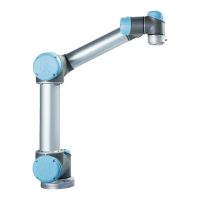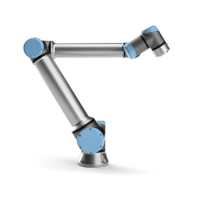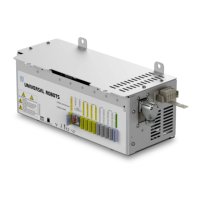All rights reserved 8 Installation Guide (en) 1.3.3
5. I/O Ports
5.1 Inputs and Outputs
Check all terminals for proper connection.
Terminals should not be loose. You should
also take caution that the shield of the wire
(if present) is not contacting any terminal
connections.
Incorrect or loose connection of these
terminals can result in problems with the
signals.
UR User Manual
Chapter “Controller
I/O”
Controller
I/O used?
YES
NO
Be sure that the current per single I/O is not
above the maximum allowed value.
Be sure that the total current used by all I/O
is not above the maximum allowed.
If there is a need for larger current supplying
capacity than can be supplied by internal
power supply unit use an external power
supply unit and make sure the 24 V jumper
is properly configured and that the internal
24 V supply of the robot is not tied to the
external 24 V supply. It is not good practice
to have the outputs of two different 24 V
power supplies connected together.
UR User Manual
Chapter “Controller
I/O”
UR Support Website
Article “Connecting
internal inputs and
outputs (I/O) on the
robot’s controller”
Be sure that the current per single I/O is not
above the maximum allowed value.
Be sure that the total current used by all I/O
is not above the maximum allowed value.
UR User Manual
Chapter “Tool I/O”
Safety
devices
connected?
YES
NO
Check mismatch time settings on safety
signals on external safety devices. Note that
dual channel safety outputs are switched
with a maximum delay of 8 ms within the
UR robots safety IO and an internal error
message is triggered after 48 ms. A value of
20 ms is recommended for setting the
mismatch on safety inputs on external
devices (like Safety PLCs).
UR Support Website
Article “Scan time for
CB3 and e-Series
controller I/O”

